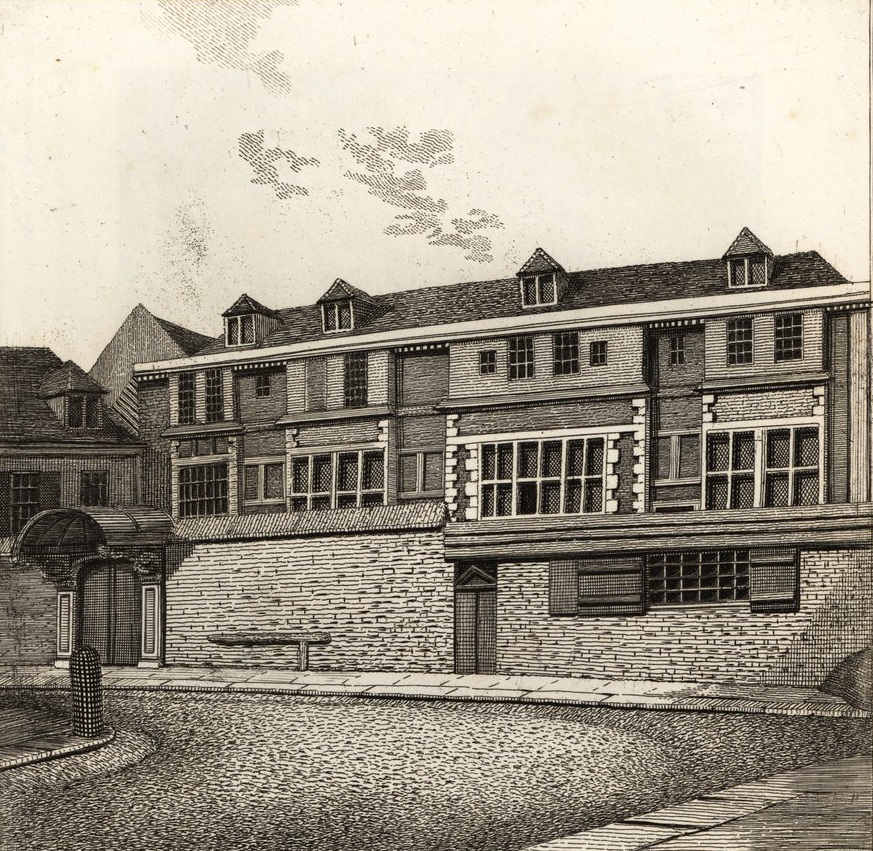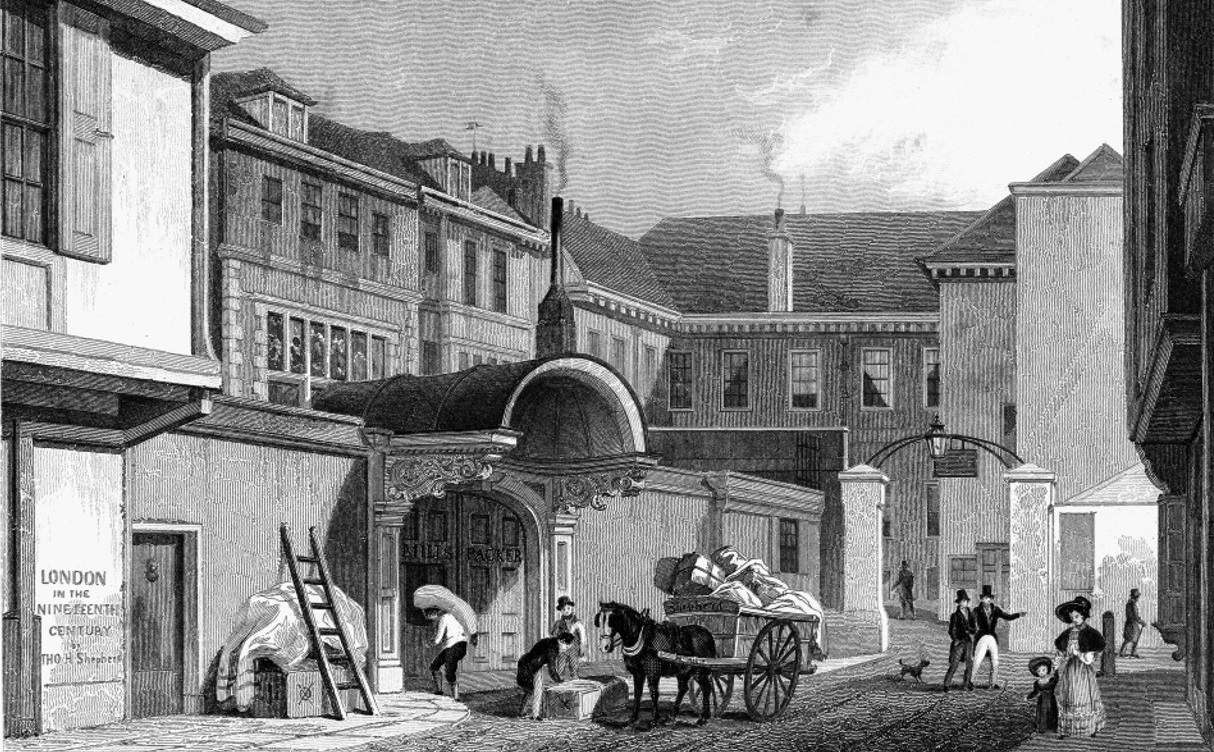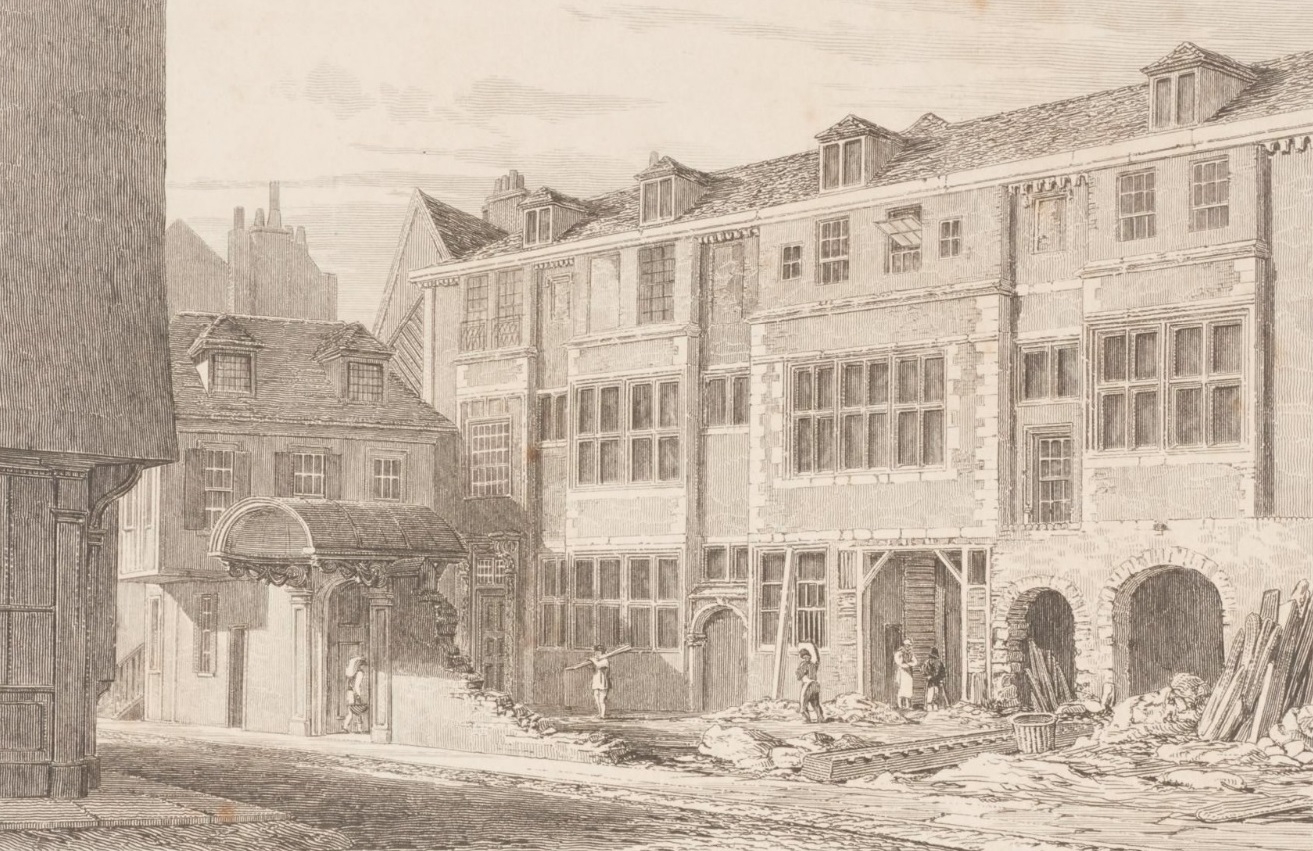It was of vast size.
It was much altered and sub-divided.
By the 19th century only part of it remained.
It was used as commercial premises.
[Gentleman's Magazine, 1839]
says the building had been recently used as "warehouses".
[Wheatley, 1891]
says that in the early 19th century the building was
"deformed by modern alterations and divided into warehouses".
William Maltass of Smyrna
lived in England for a time.
He is listed
in 1820 to 1835 as a merchant at
Winchester House, 52 Old Broad St, City of London.
In his time,
Winchester House
was densely packed with different companies.
So this would be his business premises not his home.
He is gone back to Smyrna by 1839.
Winchester House
was demolished.
[Gentleman's Magazine, 1839]
shows that the surviving part of Winchester House is then being demolished.
Though
[Wheatley, 1891]
thought part of Winchester House still existed in 1844.
A large new office building called
Winchester House
was
built c.1886
between Great Winchester St and London Wall.
This
itself was demolished
around 1965.
In 1998 a new massive office building called Winchester House
was built between Great Winchester St and London Wall.
It is the London headquarters of Deutsche Bank.
See modern 3D view.
See modern street view
of Great Winchester St.


The surviving part of the medieval
Winchester House.
Engraving of 1800.
See full size.
From Meisterdrucke
fine art.

The surviving part of the medieval
Winchester House.
Engraving of 1830.
See full size.
From Posterazzi.
It seems clear that the surviving part is on the S side of the bend on Winchester St.

The demolition of the surviving part of the medieval
Winchester House.
Engraving printed
in
[Gentleman's Magazine, 1839].
See copy
from here.
This copy from London Museum.
See full size.
See
London Picture Archive.

William Maltass listed in 1820 at
Winchester House, Old Broad St, City of London.
From p.221 of Kent's London Directory, 1820.
From here.

William Maltass listed in 1835 at
Winchester House, 52 Old Broad St, City of London.
From p.579 of Robson's London Directory, 1835.
From here.

Part of
Old Broad St on p.77 of Robson's London Directory, 1835.
Shows that Winchester House was then a densely packed business premises.
William Maltass was only one of many businesses on the premises.
From here.
There is an entry for Great Winchester St on
pp.303-304.
Why does Winchester House not appear on that street?
Please donate to support this site.
I have spent a great deal of time and money on this research.
Research involves travel and many expenses.
Some research "things to do"
are not done for years, because I do not have the money to do them.
Please Donate Here
to support the ongoing research and
to keep this website free.